The Citizen's Motorcar Company constructed this building in 1917 as a Packard dealership and that's what it was until 1939. It now houses what just may be the largest assemblage of Packards anywhere. There is a basement and two more stories that aren't accessible to museum visitors. There's an unconnected annex that is. The top floor is a sort of attic and lots of odd and ends were stored there. That's where the museum folk found the original chandeliers, which helped create the showroom like appearance of the museum's entrance, and the big neon sign which has been repaired and rehung. The donor of the 1914 Runabout that sits in the showroom has retained a few privileges that include occasionally taking his baby out for a cruise. Thus the not exactly correct but very practical turn signals.
Beyond the showroom, what was once the service area is filled with cars. I've singled out a 1930 Speedster Bobtail, the 1928 Jesse Vincent Speedster, and a 1933 Super Eight Touring. The Super Eight belonged to William Cooper Proctor who was the head of a fairly successful soap making outfit in Cincinnati. In an unsuccessful effort to tone things down, Proctor ordered the car with absolutely no bright work. Of course, the big Packard with no hood ornament and blacked out bumpers and trim became instantly recognizable. Dick, who was my guide today, told me of a recent visit by twenty some of the Proctor's chauffer's grandchildren. They took tons of pictures of themselves with the car and shared tons of stories including the fact that Franklin Roosevelt once rode in the car in a during a Cincinnati procession.
The pair of cars in the third row of photos make a rather odd couple. One is a true barn find recently pulled out of storage in nearby Eaton, Ohio. There is evidence of it having been repainted at some point in its long life but it is essentially unrestored and will likely remain that way other than getting the engine operational. The other car pictured is an exceptional 1936 V-12 Speedster with a body by Fernandez & Darrin. It's a legitimate candidate for the world's most valuable Packard. Stylish features include a teardrop shaped step rather than a full running board. Packard produced the industry's first V-12 engine in 1912. Probably because of the available casting technology, early Packard twelve cylinder engines were made by bolting two six cylinder blocks to a common crank case. This was the Twin Six. I'm not certain of this but I believe Packard switched to the V-12 designation once they began making the big engines with a single casting.
The three cars in the last row are all in the annex. In Packard's final days, when they were merely rebadged Studebakers, Chief Engineer Patrick Pridachuk caused this convertible prototype to be built but it was never produced. Read about it here. Sorry about the flash. The 1935 V-12 Convertible is part of the museum's fleet of available limousines. Sure beats the crap out of a stretch Hummer. The last car pictured is a 1903 Model K Grey Wolf Racer. Actually I guess it's the 1903 Model K Grey Wolf Racer as only one was built at a cost of $10,000 1903 dollars. It 1904 it topped 77 MPH to grab the land speed record. There is a radiator in the rear and the tubes along the side are part of the cooling system. The hood ornament is on a 1925 Phaeton Speedster back in the main building.
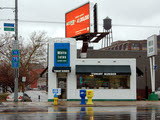
|

|

|
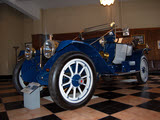
|

|
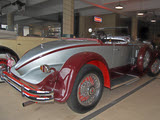
|
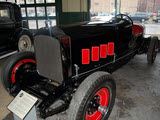
|

|
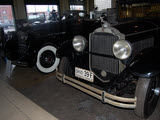
|
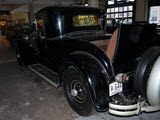
|
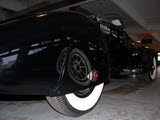
|
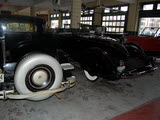
|
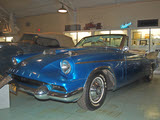
|
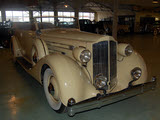
|

|
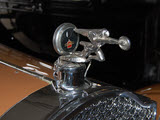
|